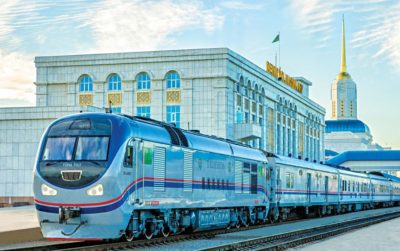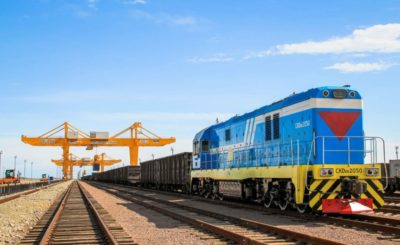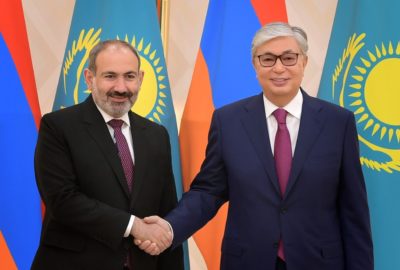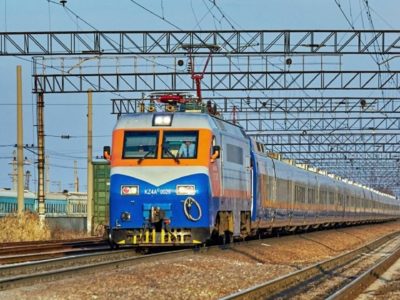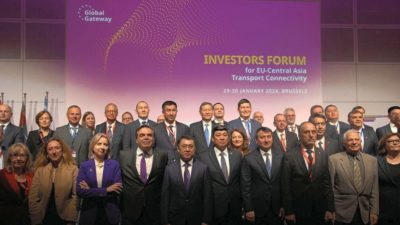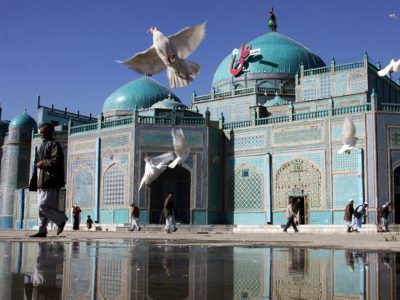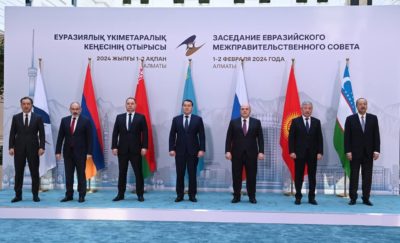International transit communications: economic gains and geopolitical differences in the Southern Caucasus
The Southern Caucasus is increasingly becoming an arena for conflicting interests of global and regional players. International Transit Communications (ITCs) projects throughout the region are a consequence of the multipolar world that has emerged. However, while the prospects for gains from the implementation of the ITCs are obvious, threats of new conflicts remain…
About the Chinese multipurpose seaport in Peru
The port of Chancay (80 km north of Lima) is currently Beijing’s most ambitious project in Latin America; it will consolidate China’s position in the region and integrate Latin American countries into trade and economic relations with the Asia-Pacific region…
Turkmentransit 2024: Turkmenistan and continental highways
Turkmenistan, whose geographical position seems quite favourable for promoting the initiative for the development of Eurasian transit highways in Central Asia, almost always remains outside the main focus of attention. Nevertheless, the republic is actively exploring the possibilities both of participating in foreign projects and promoting its own, and also seeks to attract as much investment as possible not only in its key oil and gas industry, but also in the field of transport infrastructure.
Kyrgyzstan's railways - struggling to create a unified network
Kyrgyzstan’s railways currently consist of six sections connected to each other only through the territories of the neighbouring republics of Kazakhstan and Uzbekistan. In particular, we are talking about the longest northern section – about 300 kilometres from the border with Kazakhstan to Lake Issyk-Kul, as well as five short (a few dozen kilometres) sections, which are dead-end branches to major cities from the railway that runs in an arc through the Uzbek part of the Fergana Valley…
The Dostyk-Moyinty railroad: a second line, and two routes
According to data for 2023, up to 50% of rail freight on the China-Russia-Europe route was carried along the railroad leading from PRC to Russia via Kazakhstan. This proportion is equal to the total volume of freight carried along the routes across the Russian-Chinese border and Mongolia. Moreover, Kazakh President Kassym-Jomart Tokayev estimates that the total volume of freight carried through Kazakhstan in 2023 was 29 million tons…
Ovoot-Erdinet and the Northern Railway Corridor: Prospects and Challenges
The Ovoot-Erdenet railroad line is currently under construction in Mongolia. This railroad line is one of the key sections of the so-called “Northern Railway Corridor” – a rail highway to connect Western Siberia with the PRC, the possibility of which is envisaged in the 2016 Russia-Mongolia-China Economic Corridor Project List. The length of the Ovoot-Erdenet line is 542 kilometers and the tracks run through areas with very difficult terrain and minimal power and road transport infrastructure…
Kazakhstan-Armenia: An Historic Visit, Mediation and Corridor-building
On April 15, 2024, the President of Kazakhstan Kassym-Jomart Tokayev paid an official visit to Armenia. These two states are partners in a number of international organizations – the CSTO (despite turbulence related to the attitude of the Armenian leadership to this organization), the EAEU, the CIS, and the OSCE. Bilateral trade is developing dynamically: trade turnover between Kazakhstan and Armenia increased by 23% from $43.1 million to $53.1 million at the end of 2023 compared to the beginning of the year…
Bypassing Almaty: a railroad of continental importance?
According to the Statistical Service of Kazakhstan, the total volume of goods transported by rail between Kazakhstan and China reached 23 million tons as early as 2022 and grew by a record 22 percent last year. In view of this high volume of freight traffic and the clear upward trend, the Kazakh authorities are having to invest heavily in the development of new railroads in order to serve the growing freight volumes and enable the rapid and efficient delivery of goods through the country…
Central Asia - EU: the semi-closed gates of the "Global Gateway"
In previous articles we have looked at the process of increasing European engagement in Inner Asia through bilateral initiatives. This time, the reader will get an overview of the interaction between the parties in the framework of the European Global Gateway initiative. On 25-26 October, Brussels hosted the Global Gateway Forum, which was soon described by journalists as “an alternative to China’s Belt and Road Initiative”. It is noteworthy that it took place only a week…
A promising element of Eurasian transit: the Irtysh international transport route
In 2023, the load on Kazakhstan’s Caspian ports increased by almost 10% to 6.5 million tonnes. This is still far from their maximum capacity of 21 million tonnes. Nevertheless, the country’s leadership has concerns about limiting the transport capacity of the lake in case of further shoaling of its northern sections. The costs of such circumstances promise to be significant. In this regard, in addition to the development of the Middle Corridor (ТМТМ) and dredging…
Central Asia and Afghanistan: New routes and economic opportunities for the region
In 2023, Afghanistan experienced a limited return to economic growth and infrastructure development after several years of severing most existing ties. During the year, several significant international events occurred in Central Asia, resulting in increased global attention to the region, and a number of projects of Eurasian scale were initiated. At the end of 2023, it appears that there is a long-term interest from Afghanistan in participating in these projects…
The EAEU and the 2023-2024 milestone: Positive outcomes and new ambitious plans
On December 25, 2023, a meeting of the Supreme Eurasian Economic Council was held in St. Petersburg. As one of the significant successes of the union last year, the meeting participants noted the conclusion of a free trade zone agreement with Iran on the eve of the meeting. Further development of EAEU ties with this country is expected to play an important role in promoting the continental North-South transport routes: they will play an important role in developing the export potential of the union’s member states, since, apart from the Russian Federation…


